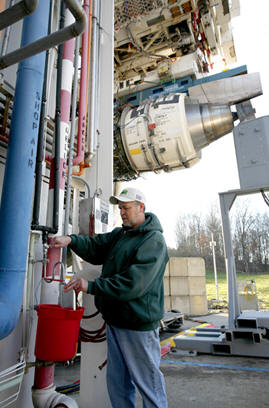 |
|
June 7, 2012 - Generations of farmers have
looked at the humble Camelina plant and saw
weed. Mike Epstein, who leads alternative fuels
development at GE Aviation, sees jet fuel. “It’s
an amazing story,” Epstein says. “You just have
to chemically modify it a little bit. Once
you’ve done that, you’ve got something that
looks very close to kerosene.”
Thanks to Epstein and his team, GE jet engines
now burn biofuel blends from plants like
Jatropha, a toxic desert shrub, wood chips, and
algae. A GE-powered Embraer jet will take off
for a test flight during Rio+20, the U.N.
sustainable development conference held in
Brazil this month. “We chip at the problem a bit
at a time,” Epstein says.
The chemistry that converts biomass to jet fuel
has been around for many decades. But the
chemical industry used the process mainly to
manufacture soap and other goods based on fatty
acids from plants, because jet fuel made from
petroleum was cheaper. The math changed when the
price of a gallon of oil crossed $100 in 2008.
“That took the art of the possible to the art of
the practical,” Epstein says.
To be clear, GE makes jet engines, not jet fuel.
But the company helps customers like airlines,
aircraft manufacturers, and the military to
switch to biofuels without any hiccups. “We look
at these fuels to make sure that our fuel
nozzles and our entire fuel system works as
advertised,” Epstein says. “Our customers don’t
need to modify anything. That’s the goal.”
|

